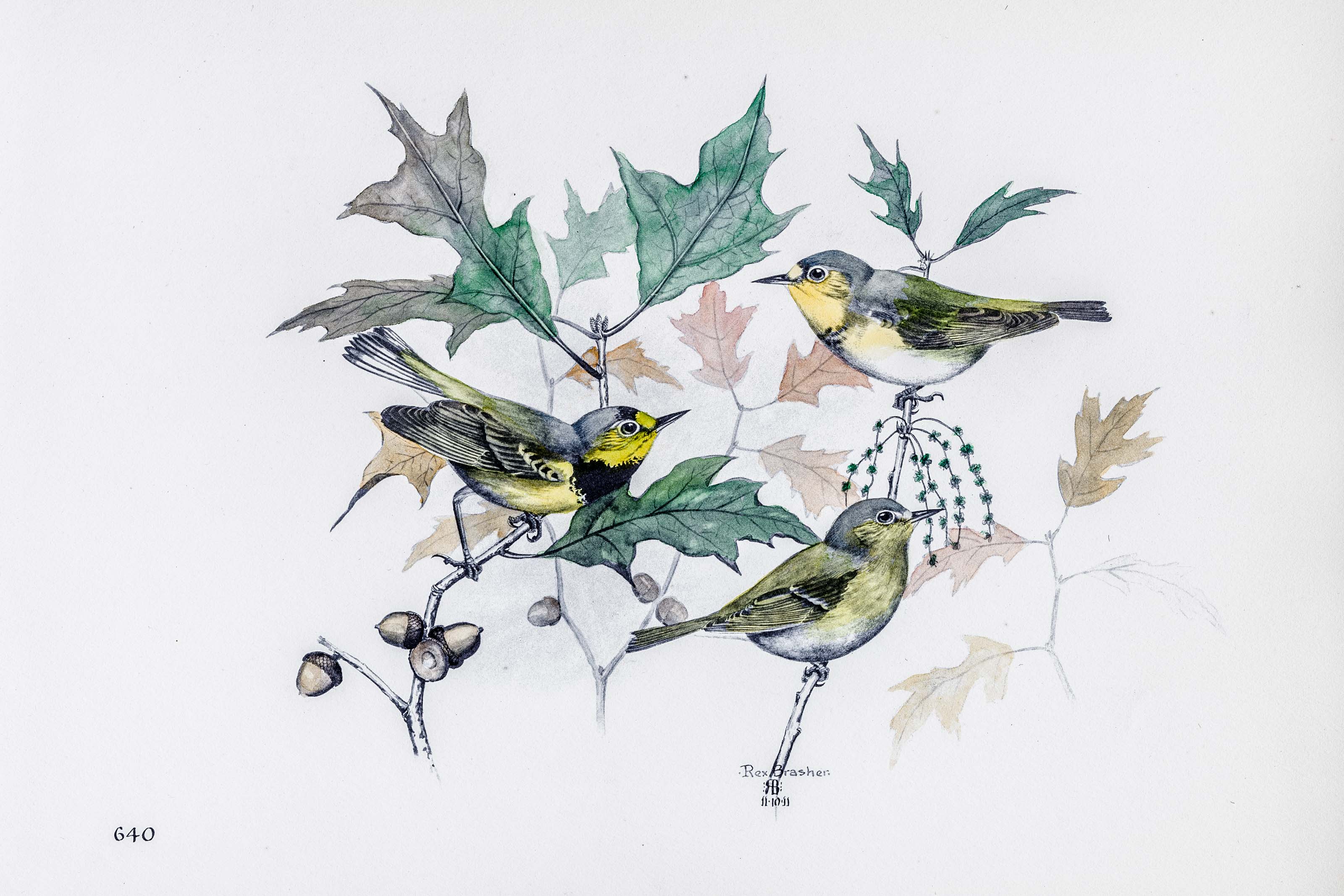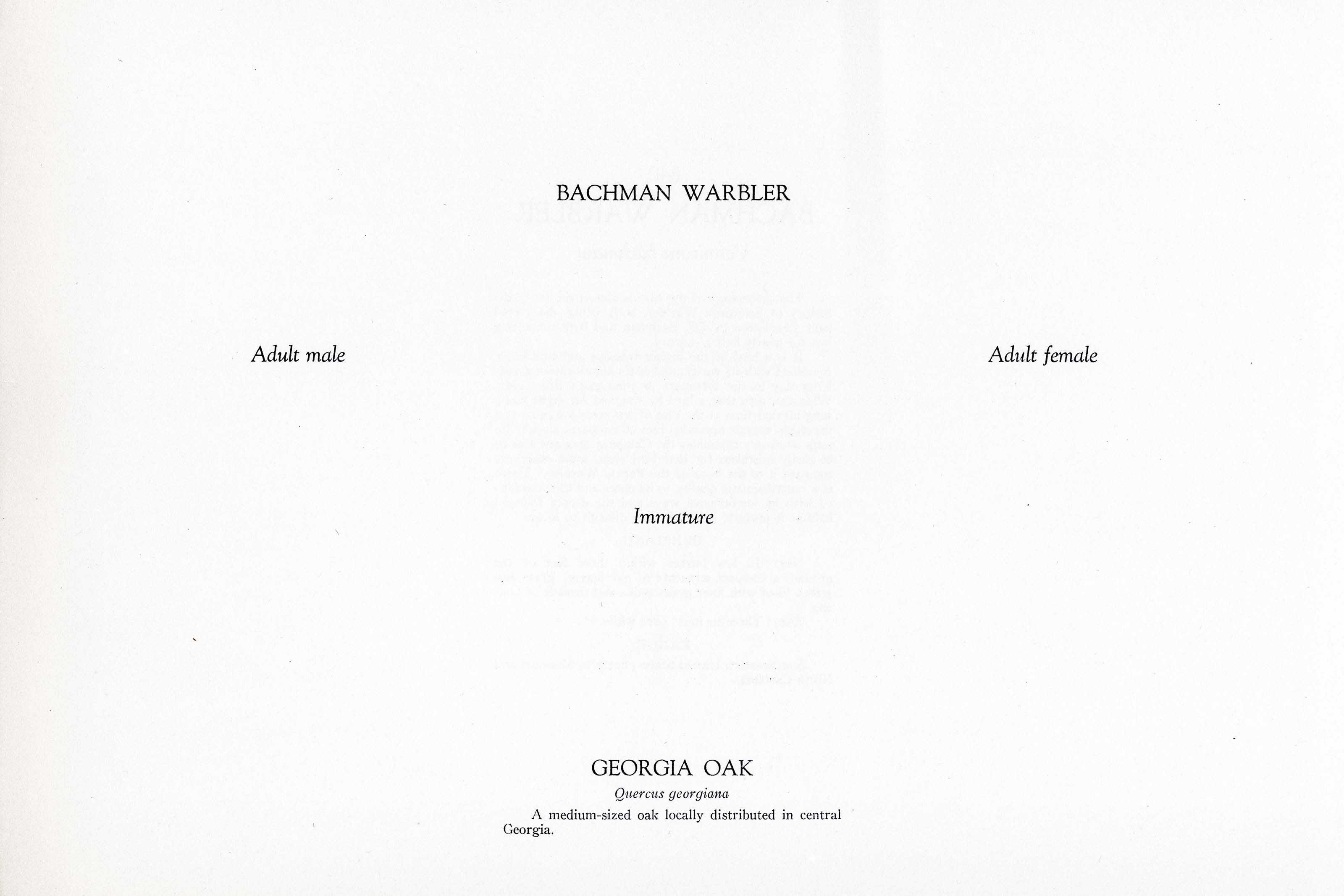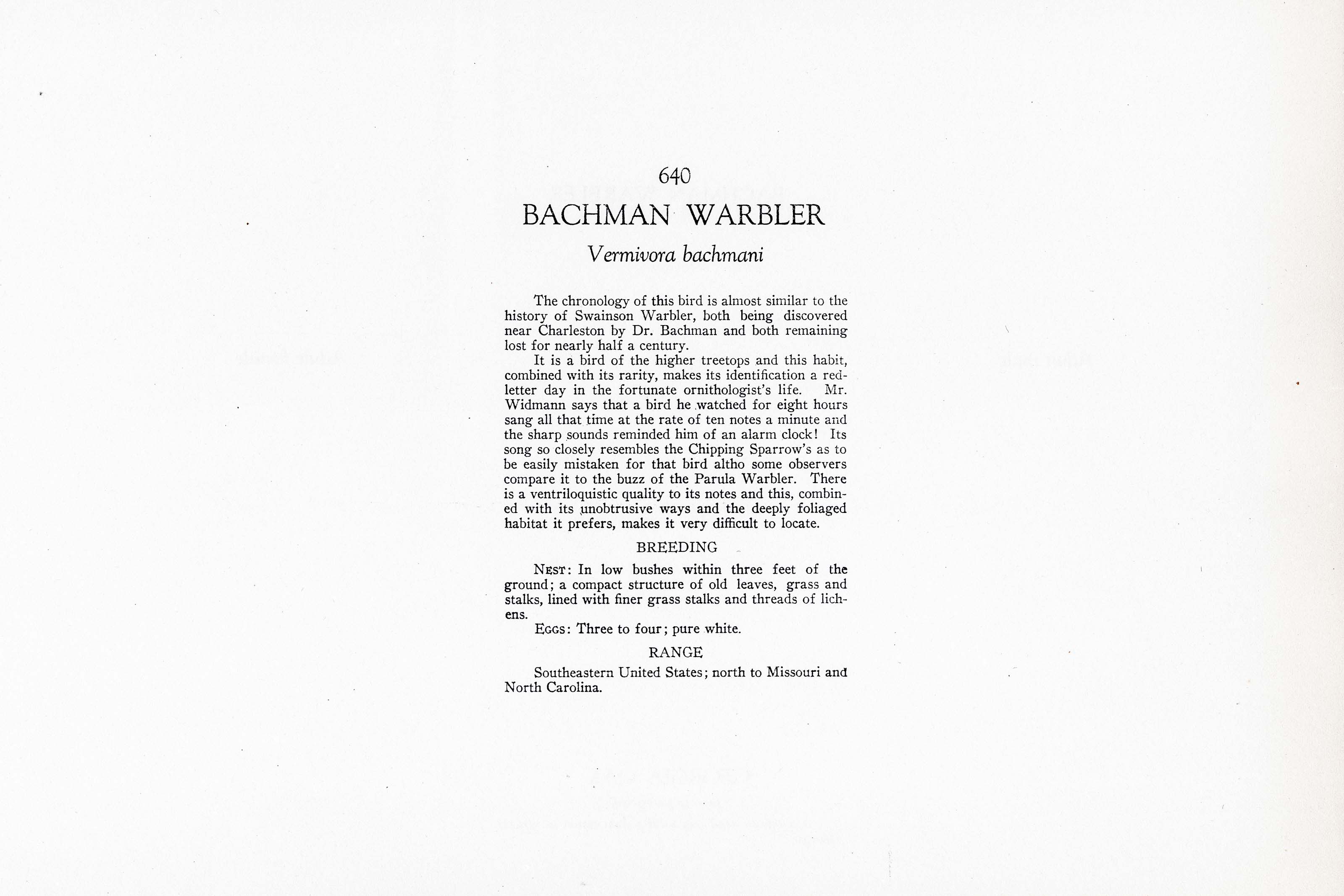






1911
1930
11
640
A team of dedicated board members, volunteers, and student interns has published every page in Volume 9. This volume includes 360 images of paintings and lyrical descriptions of birds, now available online for everyone to enjoy anywhere in the world. This is a monumental task. Each volume requires approximately 400 hours to photograph, edit, transcribe, catalog, and publish online. We need your support to complete this work.
If you're tech-savvy, have a good eye, are meticulous with details, and love structured data, please consider volunteering by emailing us at hello@rexbrasher.org.
We encourage all bird lovers and supporters to consider a monetary donation to support our mission to make Rex's work available for everyone. You can provide a one-time or recurring donation online.
The chronology of this bird is almost similar to the history of Swainson Warbler, both being discovered near Charleston by Dr. Bachman and both remaining lost for nearly half a century.
It is a bird of the higher treetops and this habit, combined with its rarity, makes its identification a red-letter day in the fortunate ornithologist's life. Mr. Widmann says that a bird he watched for eight hours sang all that time at the rate of ten notes a minute and the sharp sounds reminded him of an alarm clock! Its song so closely resembles the Chipping Sparrow's as to be easily mistaken for that bird altho some observers compare it to the buzz of the Parula Warbler. There is a ventriloquistic quality to its notes and this, combined with its unobtrusive ways and the deeply foliaged habitat it prefers, makes it very difficult to locate.
NEST: In low bushes within three feet of the ground; a compact structure of old leaves, grass and stalks, lined with finer grass stalks and threads of lichens.
EGGS: Three to four; pure white.
Southeastern United States; north to Missouri and North Carolina.
A medium-sized oak locally distributed in central Georgia.